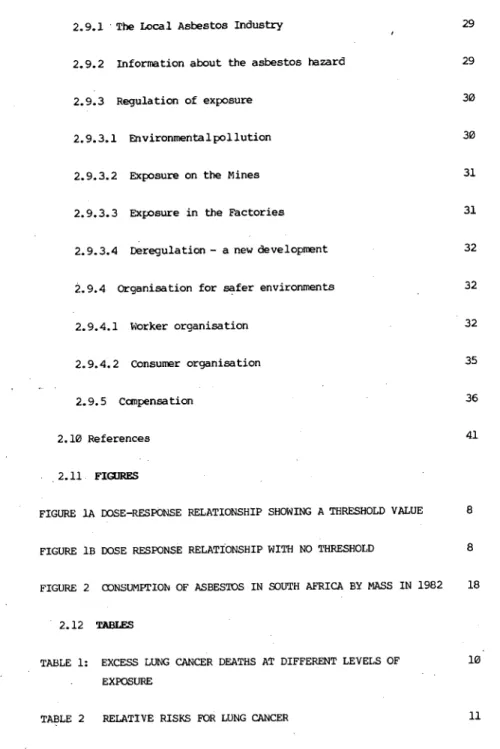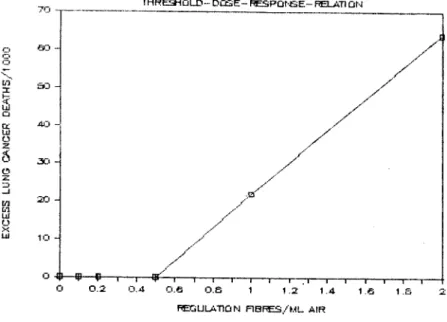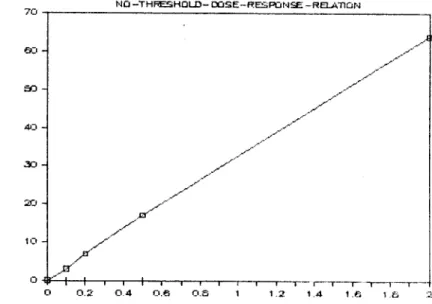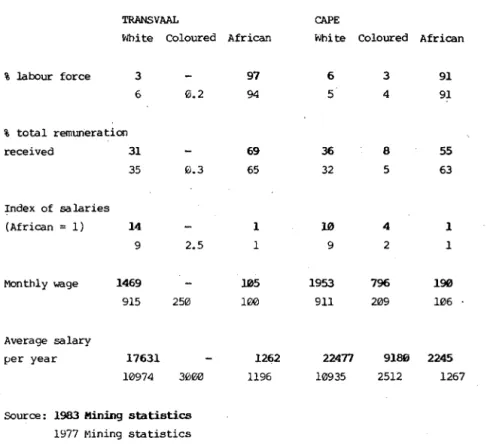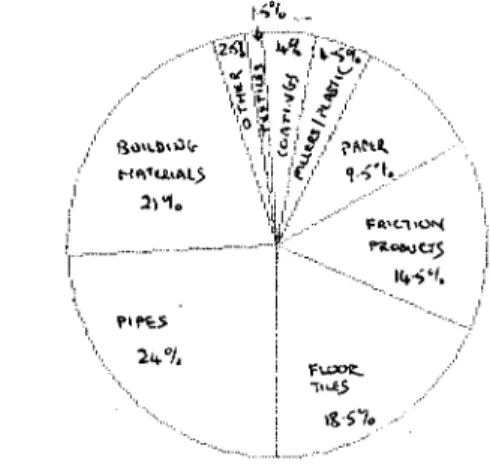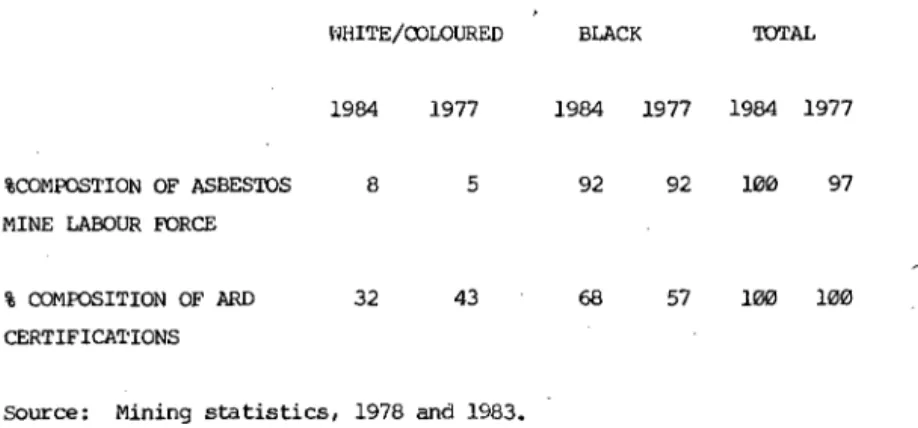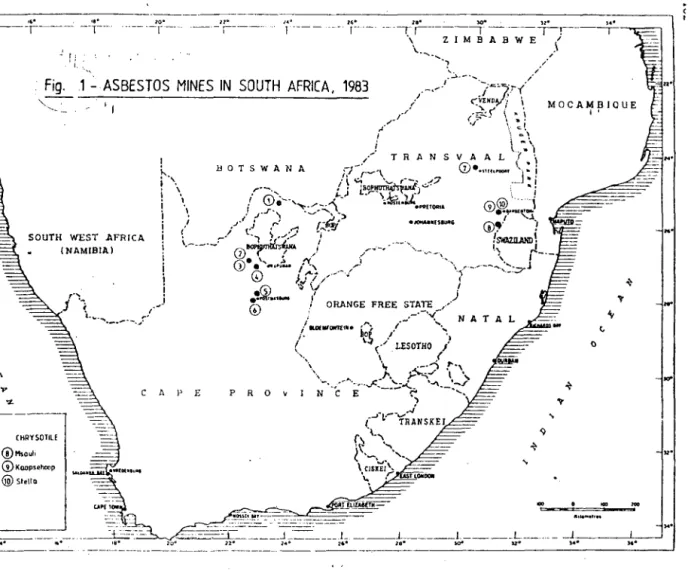This view of the role of asbestos in causing cancer is based on a study which is not supported in the scientific literature [Browne, 1983]. Studies have also shown (73,62 in references) that the same relationship exists between radiation from radon daughters (byproducts of the radioactive, decaying Radon gas) and smoking in causing lung cancer.
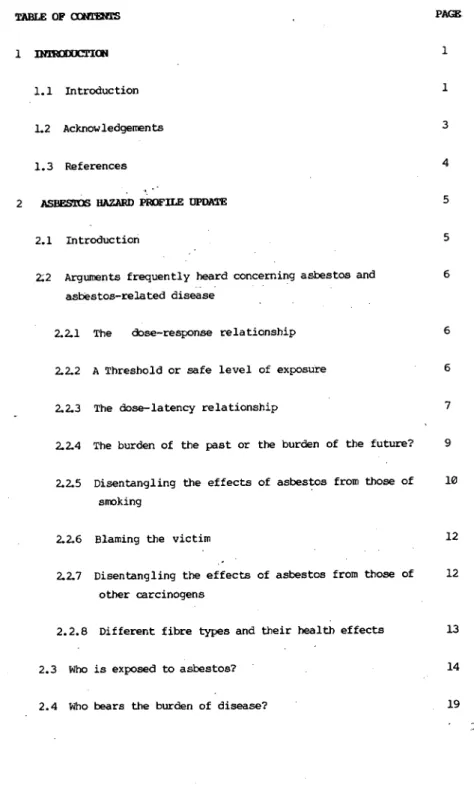
Cost-benefit analysis
This is partly due to the influence of the Reagan administration, which has openly opposed regulation and been very active in a process now called deregulation. Examples of rejected standards are the noise standard [Occupational Health and Safety Newsletter, 1984bJ and the temporary emergency standard [Occupational Health and Safety Newsletter, 1984c; Occupational Health and Safety Newsletter, 1983;. These types of processes have very little to do with the health risks involved, and much more to do with questions about power in society and the way decisions are made.
Wbo decides, who shall live and Who shall die?
Because workers are the least powerful constituent of society, it is easiest to actively incorporate their interests into the concept of the common good through these and other issues. Therefore, the concept of the common good must always be broken down into power terms before being applied. The promulgation of the regulations was delayed due to objections from the House Office of Management and Budget [Occupational Health and Safety, 1984e; stay alive, 1984J.
Taking advantage of the fact that the Reagan administration won the 1984 election, EPA leadership reversed its position and attempted to transfer the issue to OSHA (with weaker enforcement powers). There were protests from EPA staff involved in drafting the regulations and an assurance from the EPA director that the asbestos ban would not be forwarded to OSHA. Following threats of a congressional investigation of ONB for corruption (giving preferential access to the asbestos industry in making the decision to refer the case to OSHA), the decision to lift the ban was recently reversed [Chemi~l Week, 1985; Starfield, 1985J.
An alternative principle - that of giving the benefit of the doubt to those who may be exposed - would be much more appropriate to develop.
CONTROL OF ASBESTOS
In 1980, there was no union representing black workers in the asbestos mining or manufacturing sector. The unionization of asbestos workers had to be fought for every inch of the way, as the workers had to contend with some of the most conservative and anti-union employers in the country. There is still no national trade union in the construction industry, where many workers are exposed to asbestos.
But there is a trade union in the Transvaal, although the issue of asbestos does not feature in their activities. A marked increase in the rate of compensation claims filed by the company on behalf of workers with suspected asbestosis, and a similar increase in successful claims since the advent of labor unionization. In conjunction with the National Asbestos Campaign mentioned above, a group was formed in the Transvaal to raise public awareness of the issue of asbestos.
Most existing compensation benefits historically emerged from the activities of organized white labor early in the century. Such concerns are reflected in the 1979 Van Nieuwenhuizen Commission report on research into compensation for occupational diseases. The asbestos mining industry has been characterized over the past seven years by an increasing concentration of ownership and a withdrawal of foreign interests.
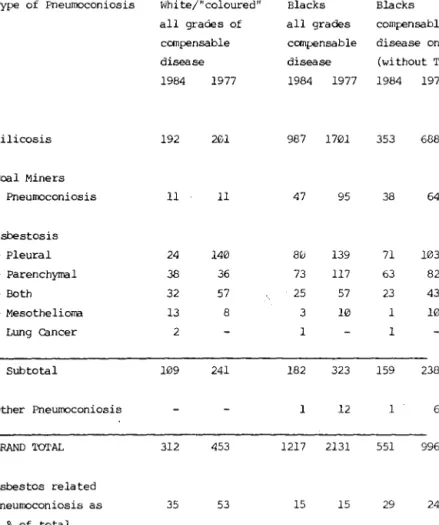
Genoor
The company owns the entire share capital of African Chrysotile Asbestos Ltd, which sells chrysotile asbestos produced at the Diepzette mine, near Barberton. Investments Asbestos extraction Asbestos extraction Asbestos extraction Ownership of mineral rights Ownership of mineral rights Ownership of mineral rights Ownership of mineral rights Ownership of mineral rights Sales organization Sales organization Asbestos extraction Groenwater Asbestos Mining Co (Oty) Ltd. Commodata (Pty) Ltd Owns mineral rights. Consolidated Blue Asbestos Corp.{Pty)Ltd Owns mineral rights.
Gefco currently operates its crocidolite mines, Pomfret, Klipfontein and Vlhitedale in the Cae, and the Penge Amosite mine in the east. Ltd with a mine and mill near Postmasburg b) a newly developed mine at Krantzkloof and .. c) Ivandrag Asbestos (Pty) Ltd at Kuruman, with a mill and two mines, Etric and England. Nsauli markets a percentage of asbestos from these two mines, giving the company effective control over the marketing of chrysotile. iii) The Hooggenoeg Asbestos Mine in Pietersburg, owned by BJ Rogers, is included in the S.A.
Detailed information on the production and sales figures of Msauli and Gefco could not be obtained as the companies stopped publishing these details in late 1981, given the increasingly competitive nature of the market.
Production
Since 1980, however, production rates have fallen in line with the reduced world demand for fibres, particularly in the building and. The production composition of the three fiber types and the relative contributions expressed in value for local and export sales are shown in Table 3 for 1977 and 1983. The bulk of export earnings in recent years was provided by crocidolite (68%) and almost exclusively from amphibole production (85%).
The contribution to export earnings in recent years has therefore fallen sharply, reflecting a greater public awareness of the health hazards of asbestos and especially the increased carcinogenic properties of this particular fibre. In parallel, the amount of crocidolite consumed locally has increased, although in recent years it has started to decline again with a decrease in demand in the construction industry. The figures for local sales and export sales in terms of the quantity of each type of fiber produced and its value in rands are shown in Table 4 for the years between 19m and 1983(11).
The decline in domestic demand since that time reflects stagnation in the building and construction sectors of the market.
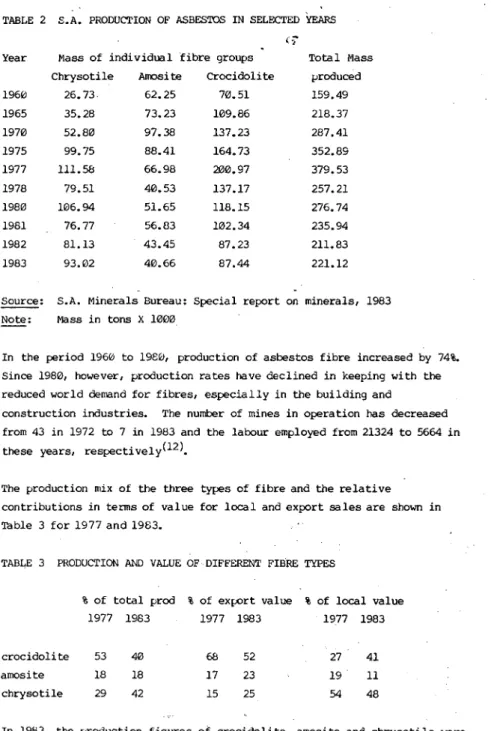
Export sales
Minerals Bureau: Special report on minerals, 1983 As SWaziland's product is marketed through South Africa, their export figures for 1983 could be used as a rough indicator of the destinations of South African exports. In 1984, asbestos was the 7th largest earner of metals and minerals export earnings in RSA after (in order) gold, coal, diamonds, iron ore, copper and manganese, representing 0.9% of total export sales.(15) 1977 was asbestos the fifth most important mineral (including metals) and contributed 2.4% of total mineral sales. According to the US Bureau of Mines, about 200 million tons of identified resources of asbestos and 45 million tons hypothetical.
In addition, asbestos (less than 40,000 tonnes) is produced in Afghanistan, Argentina, Australia, Bulgaria, Cyprus, Egypt, India, Republic of Korea, Japan, Mozambique, Taiwan, Turkey, Yugoslavia, North Korea, Czechoslovakia and Romania. About 90 to 95% of the total world production is chrysotile, with Canada and the USSR producing only this fiber. In South Africa, amphibole, amosite and crocidolite account for 60% of annual production and together account for 75% of export sales (18).
As the largest producer in the Western world, Canada has tended to be a price setter in chrysotile.
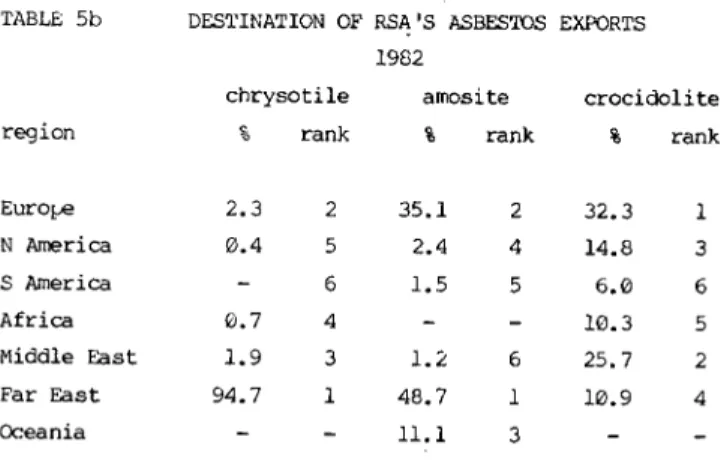
World Consuopticn
Amphiboles command a higher price than chrysotile during normal economic periods due to their superior physical properties. 34;other" is a suspiciously large category in 1983, which probably led to an underestimate of the percentage used in construction.
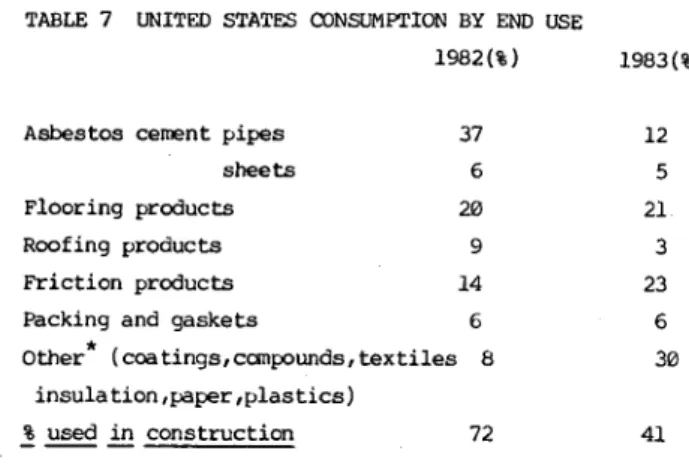
World Trends
If the US Environmental Protection Agency's proposal to ban four asbestos-containing building products (which account for at least 50% of total US consumption) and phase out asbestos products entirely over the next decade is accepted, this could have dire consequences for producers of raw asbestos and manufacturers of asbestos-containing products. The concentration of industry in recent years has served to eliminate local competition and has allowed. Gefco's primary markets are not in the US, where only 8-12% of South Africa's sales occur, but in countries where the power of the construction industry is less than in the US.
This new offensive by the asbestos industry has obvious negative consequences for South Africa - the only producer of amphibole. Msauli has suffered from stiff competition and depressed prices in the chrysotile market, but various factors inherent to the mine have exacerbated unprofitable production over the past two years. It has been suggested that the high cost of working the mine at greater depth, which is required due to the steep drop of the ore deposit below the mountain, could cause the mine to close if production prices remain low.
A further factor that reduced recent production was the flooding of the mine due to Cyclone Domoina in February 1984.
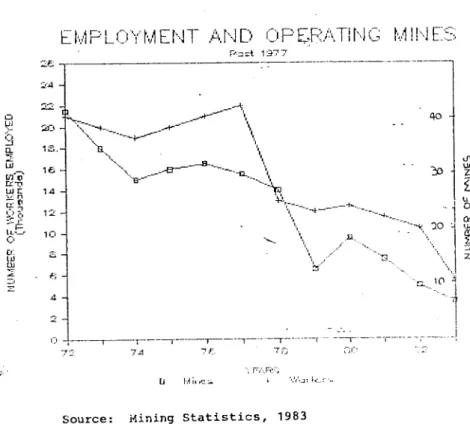
This article has attempted to provide an overview of the current state of knowledge regarding the health hazards of asbestos and the state of the industry in South Africa. It has been definitively proven that asbestos is a carcinogenic substance that, under normal working conditions, poses a serious health hazard to most employees who work with the substance. Although the economic recession must have been largely responsible, a major detrimental factor is the type of asbestos produced here.
Amphibole asbestos has been repeatedly identified as a more aggressive carcinogen in numerous studies and is, for practical purposes, the sole cause of the deadly mesothelioma cancer. In the United States and other developed countries, the industry was exposed for much of the twentieth century as trying to cover up the harmful effects of asbestos. In the US, huge and damaging costs have been imposed on asbestos companies for the benefit of victims of asbestos-related diseases.
Given the continued negative publicity for both company and product, it appears that there will be either a short- or long-term improvement in the industry's fortunes.
